Santiago to San Pedro de Atacama
- Home
- Rutas
Driving from Santiago to San Pedro de Atacama is a fascinating journey that takes you through diverse landscapes, from the bustling city to the vast desert plains of northern Chile. Here’s some information to help you plan your trip:
Distance and Duration: The distance between Santiago and San Pedro de Atacama is approximately 1,550 kilometers (960 miles), depending on the route you take. The drive usually takes around 20 to 24 hours, considering rest stops and possible overnight stays along the way. It’s important to plan your itinerary accordingly and allow for enough time to rest and explore the attractions along the route.
Route Options:
Pan-American Highway (Ruta 5): This is the most direct and commonly used route. You’ll travel north from Santiago, passing through cities like La Serena and Copiapó before reaching San Pedro de Atacama. The road is well-maintained and offers several amenities along the way.
Coastal Route: If you prefer a more scenic drive, you can take the coastal route. From Santiago, you’ll head west toward the Pacific coast, passing through beautiful coastal towns like Zapallar and La Serena. Eventually, you’ll join the Pan-American Highway and continue north to San Pedro de Atacama.
Road Conditions and Safety: The roads in Chile, particularly the major highways, are generally in good condition. However, it’s advisable to check the current road conditions and weather forecasts before your trip, as road conditions can vary due to construction or weather events. It’s also important to obey traffic regulations and be cautious while driving, especially during long stretches of road and in remote areas.
Fuel and Facilities: Ensure that you have a full tank of fuel before embarking on the journey, as fuel stations can be scarce in certain sections, especially in the desert regions. Plan your rest stops in advance to refill your fuel and take breaks. Along the way, you’ll find rest areas, cafes, and service stations where you can refuel and take a break.
Attractions along the Route: While the main highlight of your trip will be San Pedro de Atacama itself, there are several noteworthy attractions along the route that you may want to explore, such as the coastal cities of Valparaíso and La Serena, the Elqui Valley known for its vineyards and stargazing opportunities, and the Pan de Azúcar National Park.
Before embarking on your journey, it’s essential to research the current travel restrictions, road conditions, and any permits that may be required. It’s also recommended to have a well-maintained vehicle, carry emergency supplies, and inform someone about your travel plans for safety purposes.
Driving from Santiago to San Pedro de Atacama offers a chance to witness the beautiful Chilean landscapes and experience the transition from the central region to the enchanting Atacama Desert. Enjoy the adventure and take in the breathtaking sights along the way!
Table of Contents
Day 1: Santiago - La Serena
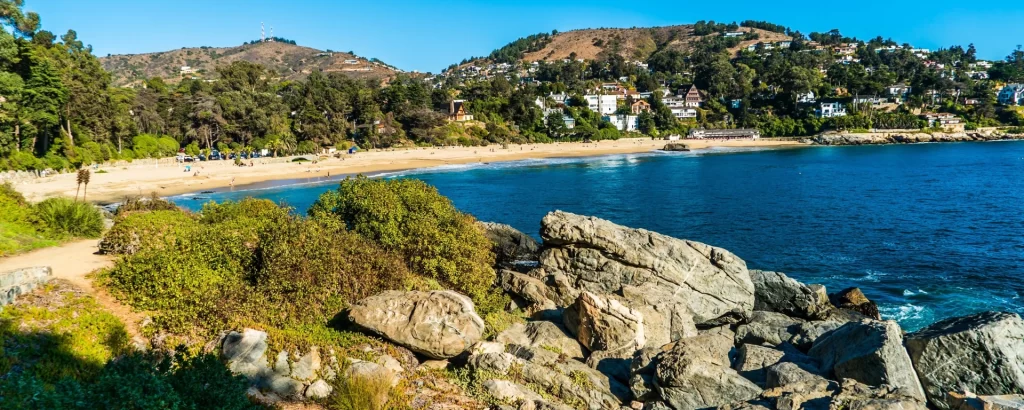
- Depart from Santiago early in the morning.
- Drive north on the Pan-American Highway (Ruta 5) towards La Serena.
- Along the way, make a stop in the coastal town of Zapallar for a stroll and to admire this wonderful town. You can have lunch here!
- Continue driving and reach La Serena, a beautiful beach town. Explore its historic center, enjoy the beach, and try some delicious seafood.
- Overnight in La Serena.
- It is also possible to spend the night in Tongoy or Guanaqueros, before La Serena.
Day 2: Valle del Elqui
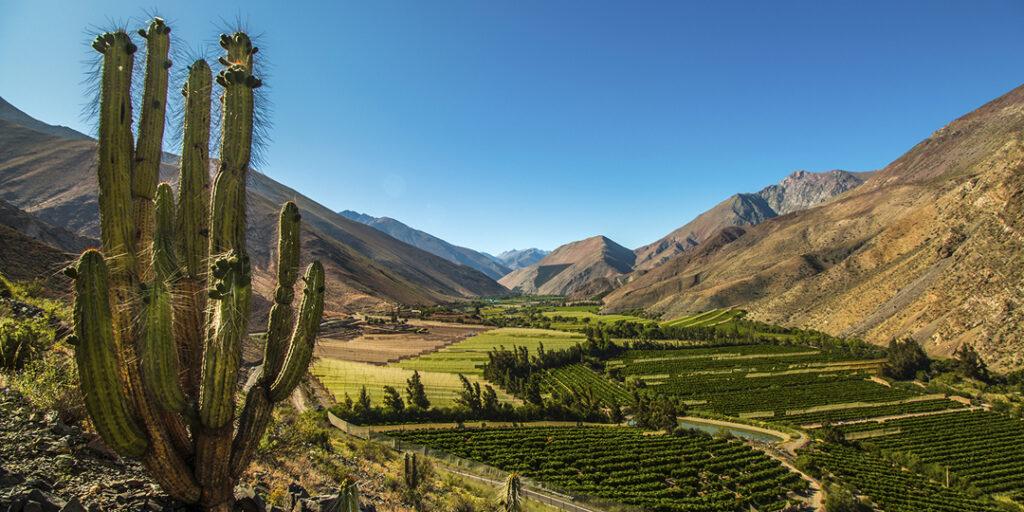
If you have only one day to explore Valle del Elqui, here’s a suggested itinerary to make the most of your time:
Morning:
- Start your day early and head to the town of Vicuña, the main hub of Valle del Elqui. It’s located about 1.5 to 2 hours’ drive from La Serena.
- Visit the Gabriela Mistral Museum (Museo Gabriela Mistral) to learn about the life and work of Chile’s Nobel Prize-winning poet. The museum showcases artifacts and exhibits related to her life and poetry.
- Take a stroll through the picturesque streets of Vicuña and enjoy the charming atmosphere of this small town. Visit the main square, Plaza de Armas, and admire the colonial architecture.
Mid-Morning:
- Make your way to a local pisco distillery. Valle del Elqui is renowned for its pisco production. Take a guided tour to learn about the pisco-making process, from the harvesting of grapes to the distillation and aging techniques. Don’t forget to sample some pisco varieties and indulge in tasting sessions.
- Consider visiting one of the well-known distilleries like Pisco Mistral or Pisco Capel.
Lunch:
- Enjoy a traditional lunch at one of the local restaurants in Vicuña. Try regional specialties such as empanadas, cazuela (traditional Chilean stew), or fresh seafood dishes.
Afternoon:
- Venture into the beautiful countryside of Valle del Elqui. Take a scenic drive along the valley, surrounded by stunning landscapes and vineyards.
- Visit the Puclaro Reservoir, a large artificial lake known for its picturesque setting. You can enjoy activities like sailing, kayaking, or simply relax and take in the serene surroundings.
- Explore the towns of Pisco Elqui and Montegrande. Pisco Elqui is a charming village where you can find artisanal crafts and local products. Montegrande is the birthplace of Gabriela Mistral, and you can visit her childhood home and pay homage to the famous poet.
Evening:
- As the day winds down, find a spot to enjoy the incredible sunset views in Valle del Elqui. The valley is renowned for its clear skies, so take advantage of the opportunity for stargazing.
- If you have time, consider visiting one of the observatories in the area for a unique stargazing experience. Many observatories offer guided tours and telescope observation sessions.
After your day of exploration in Valle del Elqui, you can either return to La Serena or consider staying overnight in one of the charming accommodations in the valley to fully immerse yourself in the tranquility of the region.
Day 3: Punta de Choros

For your third day, we recommend driving to Punta de Choros:
Morning:
- Depart from La Serena or Valle del elqui early in the morning, as Punta de Choros is approximately a 2-3 hour drive north.
- Upon arrival, head to the Punta de Choros beach area and visit the local information center to gather information about the area and any specific activities or tours available.
Mid-Morning:
- Take a boat tour to the Humboldt Penguin National Reserve (Reserva Nacional Pingüino de Humboldt). This reserve is home to a diverse range of marine wildlife, including Humboldt penguins, dolphins, sea lions, and various bird species.
- Enjoy the breathtaking scenery as you navigate through the turquoise waters and observe the wildlife in their natural habitat.
- Your boat tour may include stops at Isla Damas and Isla Choros, where you can explore the islands, walk along the beaches, and encounter the local fauna.
Lunch:
- After your boat tour, head back to Punta de Choros and have a leisurely lunch at one of the local seafood restaurants. Sample delicious fresh seafood dishes, such as ceviche or grilled fish, while enjoying the coastal views.
Afternoon:
- Visit the Humboldt Penguin Interpretation Center (Centro de Interpretación Pingüino de Humboldt) in Punta de Choros. Here, you can learn more about the unique ecosystem of the area, the importance of conservation, and the efforts to protect the Humboldt penguins.
- Take a stroll along the Punta de Choros beach, relax on the sand, or take a dip in the refreshing waters.
Please note that it’s recommended to check the availability of boat tours and reserve your spot in advance, especially during peak seasons. Additionally, it’s important to respect the environment and wildlife, following any guidelines provided by tour operators and maintaining a responsible approach to tourism in the area.
Day 4: Punta de Choros - Pan de Azucar NP
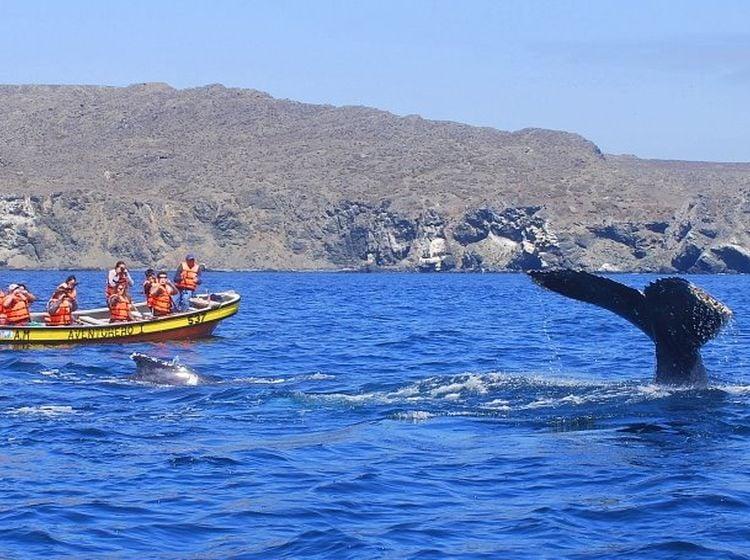
For your third day, we recommend driving to Pan de Azucar National Park:
Morning:
- Depart early morning to the town of Chañaral de Aceituno (20 minutes from Punta de choros).
- Upon arrival, head to the caleta and take a whale watching tour (depending on the season). We highly recommend booking this in advance. We recommend Turismos Orca.
Mid-Day:
- Leave the town of Chañaral de Aceituno towards Ruta 5 Norte. Drive all the way to Chañaral, and take the detour to Pan de Azucar National Park.
Pan de Azúcar National Park: Follow the road leading to Pan de Azúcar National Park. The park is located on the coast and offers stunning views of the ocean and rugged cliffs. You can explore various hiking trails, spot wildlife such as guanacos and marine birds, and enjoy the beautiful beaches within the park.
Please note that it’s recommended to check the availability of boat tours and reserve your spot in advance, especially during peak seasons. Additionally, it’s important to respect the environment and wildlife, following any guidelines provided by tour operators and maintaining a responsible approach to tourism in the area.
Day 5: Pan de Azucar NP - Paposo
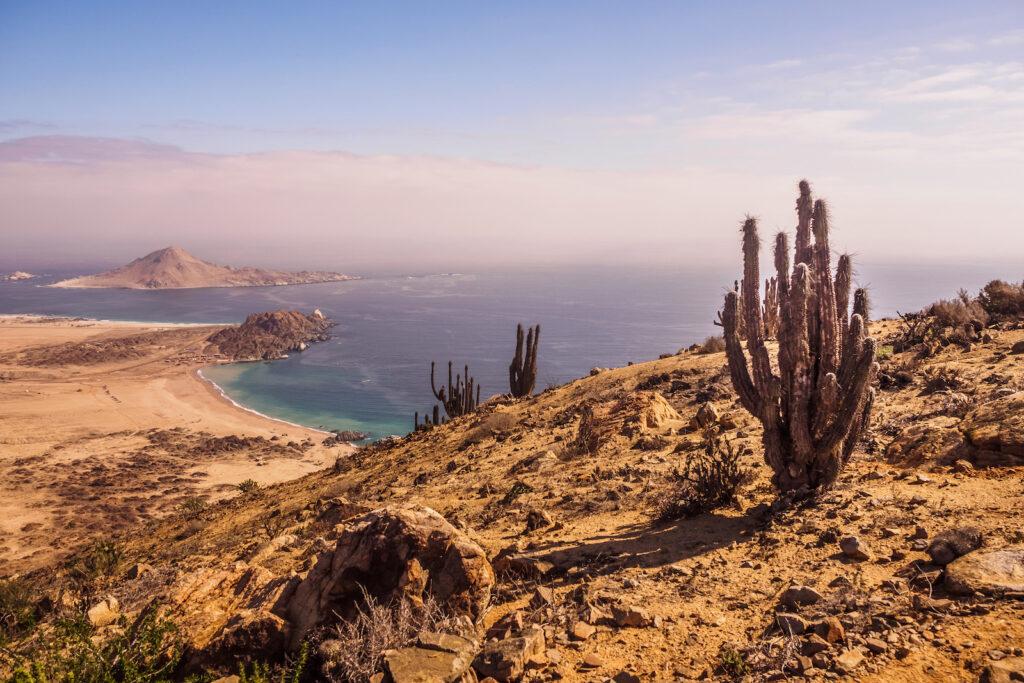
The drive from Pan de Azúcar National Park to Paposo takes you through a scenic route along the coast of northern Chile.
We recommend you to spend the morning in Pan de Azucar NP, and leave after lunch to Paposo.
Here’s an overview of the drive:
Departing from Pan de Azúcar National Park: Start by leaving Pan de Azúcar National Park and head north on Route 5 (Pan-American Highway).
Continue on Route 5: Follow Route 5 northbound for approximately 160 kilometers (99 miles). This stretch of the drive will take you through desert landscapes, with occasional views of the ocean on your right-hand side.
Taltal: After driving for about 160 kilometers (99 miles) on Route 5, you’ll reach the town of Taltal. Taltal is a small coastal town where you can stop for a break, grab a meal, or explore the surroundings.
Paposo: From Taltal, you’ll need to take a detour towards Paposo. Look for signs or ask for directions to ensure you’re on the right track.
Paposo: Continue on the road towards Paposo, which is approximately 45 kilometers (28 miles) north of Taltal. The road will take you through rugged desert landscapes and along the coast, offering stunning views of the Pacific Ocean.
Arrival in Paposo: Once you arrive in Paposo, you’ll find a small coastal village known for its fishing industry and beautiful beaches. Take some time to relax on the beach, explore the town, and enjoy the peaceful atmosphere of this remote coastal destination.
Day 6: Paposo - San Pedro de Atacama
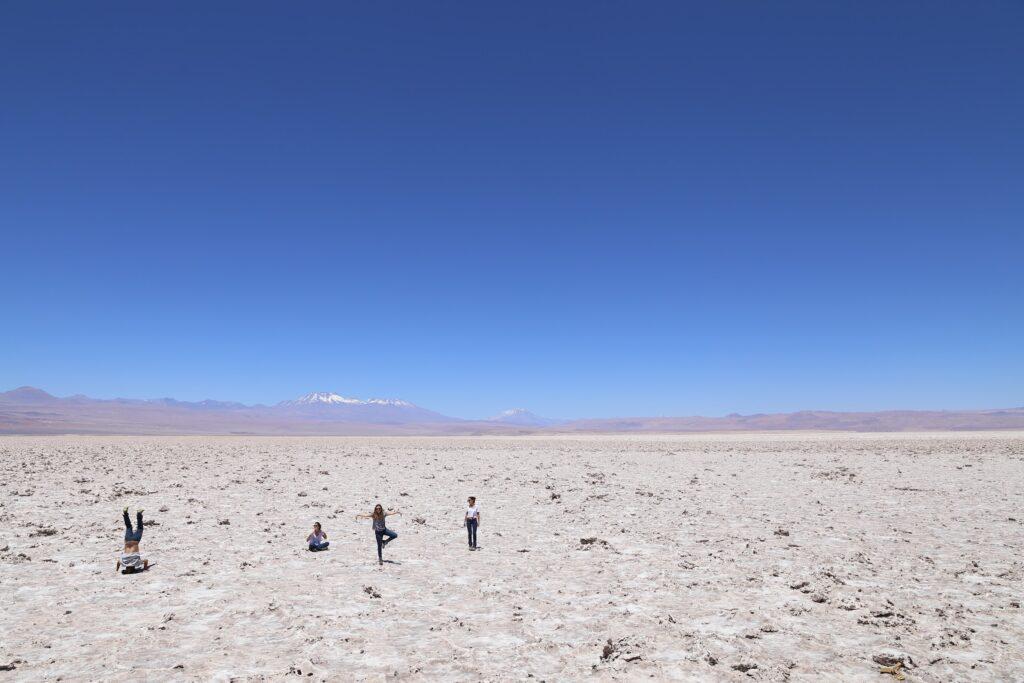
This will probably be one of the longest days of driving.
- From Paposo, take the route north towards Route 5. Once you reach route 5 north, you can either skip Antofagasta or visit this city.
- In Antofagasta it is recommended to visit La Portada, an iconic view in this region.
- It is recommended to fill up the fuel tank before leaving Antofagasta.
- When you leave Antofagasta, drive all the way to Baquedano, and take the detour towards Toconao by route B-835.
- Here you will cross the Atacama Desert and some salt flats.
- Once you reach Toconao, you are about 25 minutes from San Pedro de Atacama.
- There are plenty of campgrounds you can choose from, in town or outside of town.
Days 7-12: Explore!
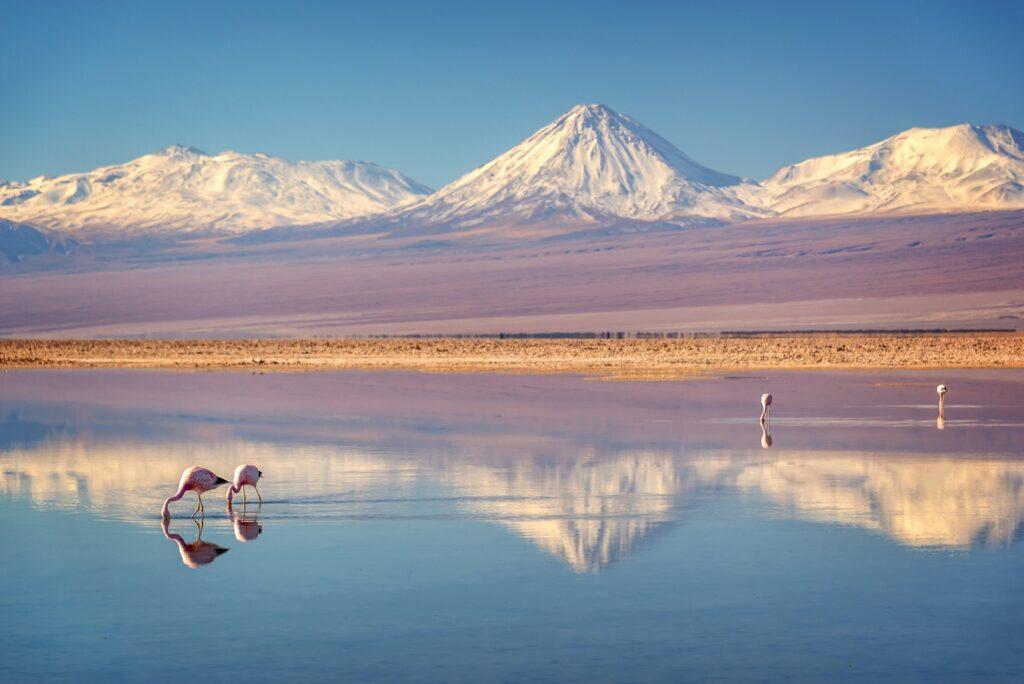
Here’s a suggested 6-day itinerary for exploring San Pedro de Atacama and its surrounding areas in a camper:
Day 7: Arrival in San Pedro de Atacama
- Explore the town and its charming streets, visit the main square, and try local cuisine.
- Optional: Enjoy stargazing at one of the renowned observatories in the area.
Day 8: Valle de la Luna (Moon Valley) and Salt Mountain Range
- Start early and drive to Valle de la Luna, a breathtaking desert landscape.
- Explore the various rock formations, salt caves, and sand dunes.
- Enjoy the sunset at the Duna Mayor viewpoint.
- Visit the Salt Mountain Range and hike to the Catarpe Valley.
- Return to San Pedro de Atacama for the night.
Day 9: Tatio Geysers and Machuca Village
- Depart early in the morning for the Tatio Geysers, one of the highest geothermal fields in the world.
- Witness the impressive geothermal activity and enjoy a relaxing dip in the natural hot springs.
- Visit the nearby Machuca Village, known for its traditional adobe houses and llama herding.
- Return to San Pedro de Atacama for the night.
Day 10: Lagunas Altiplánicas and Salar de Atacama
- Drive to the Lagunas Altiplánicas, a series of stunning high-altitude lagoons.
- Visit the Miscanti and Miñiques lagoons, surrounded by volcanoes and breathtaking landscapes.
- Explore the Salar de Atacama, the largest salt flat in Chile, and witness its unique flora and fauna.
- Visit the Chaxa Lagoon, home to flamingos and other bird species.
- Camp overnight near the Salar de Atacama.
Day 11: Rainbow Valley and Petroglyphs
- Drive to the Rainbow Valley, known for its colorful rock formations caused by mineral deposits.
- Explore the valley and its vibrant landscapes.
- Visit the nearby Hierbas Buenas Petroglyphs, an archaeological site with ancient rock carvings.
- Return to San Pedro de Atacama for the night.
Day 12: Lagunas Escondidas and Departure
- Visit the Lagunas Escondidas (Hidden Lagoons), a set of seven crystal-clear lagoons.
- Enjoy swimming or floating in the saline waters of these hidden gems.
- Return to San Pedro de Atacama, return the camper, and prepare for departure.
Please note that this itinerary is a suggestion and can be customized based on your preferences and the time available. It’s also important to consider the weather and road conditions, as they can affect your plans. Make sure to check for any necessary permits, park regulations, and camping regulations before embarking on your journey.

